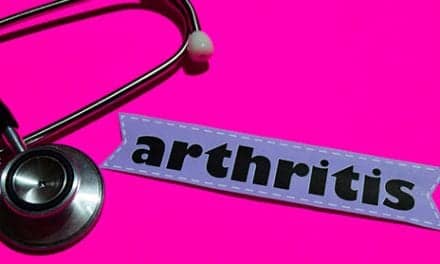As a clinician, treating those with low back pain is like dealing with a difficult problem at work or home. A whole host of factors may interfere with decision-making, but by taking a “problem is an imbalance” approach, clarity is obtained and solutions become real.
Since the cause of acute low back pain is often unknown, we can vaguely define the reason as an imbalance. Webster’s Dictionary defines imbalance as “the state or condition of lacking balance and faulty muscular coordination.” It’s well documented that physical changes, such as stiffness and loss of muscle strength, occur to the low back as we age, resulting in more than 75% of all adults suffering low back pain at some point in their lives. Fortunately, with acute care, education, and beginning an exercise program, most will recover from their pain.
According to WebMD, 5.6% of adults in the United States suffer from the effects of low back pain each day,1 with 18% indicating they have had back pain within the previous month.2 In addition, the lifetime prevalence of low back pain is estimated to be at least 70%3,4 and, although most patients self-treat back pain, only 25% to 30% seek medical care making back pain one of the most common reasons for visits to family physicians.5,6 In fact, family physicians treat more patients with back pain than any other subspecialists, including orthopedists and neurosurgeons combined.3
ACUTE CARE
Active inflammation increases pain, resulting in guarding and stiffness of the low back and pelvis, as the body begins to transition from balanced to imbalanced. Returning the body to a state of balance as early as possible is directly proportional to the return to function. Acute low back pain (or pain that has lasted less than 3 months) will usually improve within a few weeks after commencing treatment.
When clients come into the clinic, the education process begins, as their physicians will have recommended they begin taking anti-inflammatories at the onset of pain. Our therapists will then encourage patients to apply ice for the first 2 days (which complements this strategy), then, after several days, apply heat to the affected area to loosen soft tissue—which should improve abilities to move and get active with walking and simple exercises. (Heat should be applied for a maximum of 15 minutes, every few hours.) Switching between heat and ice is also a common strategy. Other topics of patient education include positioning (such as resting in a reclining chair, side sleeping with pillow supports between the legs, and using lumbar supports), ergonomics, and addressing family issues (which include lifting young children, grocery bags, vacuuming, etc).
Finally, it is well documented that being down and out, in bed, and resting for longer than 3 days will lengthen the recovery process. Getting back to normal activities as soon as possible will prevent the muscle deconditioning that can set off a long list of imbalances.
FINDING, AND ADDRESSING, THE IMBALANCE
One injury, one recovery: With a host of physiological responses that occur, an acute injury to the low back could cause many imbalances that, if resorted quickly, will improve your reputation in the community and with your referral sources by tenfold.
Assessing these imbalances includes soft tissue assessments, intervertebral mobility (or lack of), joint stiffness of the hips or lower extremities, leg length, muscle strength, range of motion, and a host of other special tests. Muscles around the spine and hips should be evaluated for tightness and weakness to restore normal lengths and strength to reduce stress on the lumbar spine. The muscles that are prone to tightness are the iliopsoas, quadriceps, lumbar paraspinals, hamstrings, and iliotibial band. The muscles that are usually found to be weakest are the lower and upper abdominals. Therefore, the dynamic lumbar stabilization program uses a comprehensive approach to restore trunk stability by using abdominal muscular force to reduce excessive stresses to the lumbar spine during functional activities. Gathering information will improve your planning for the patient, including use of modalities, manual therapy, and education.
With the game plan in effect, taking on dynamic movement patterns is paramount to your success.
DYNAMIC STABILIZATION PROGRAM
It is commonly told that movement patterns are learned, and moving throughout your day in a spinal neutral way will help reduce the torsional and compressive forces on your spine. Since movement patterns are learned (from unconsciously incompetent, to consciously incompetent, to consciously competent, to unconsciously competent), we can teach individuals to move while maintaining a stable base. This instruction, if practiced in the clinic, will help a person suffering from back pain learn the mechanics of dynamic movement, all while supporting the one-on-one approach your clinic strives to achieve.
Belief in one-on-one interaction is a core belief in our delivery of care. A dynamic stabilization program achieves our education goals, while keeping the program proactive, practical, and fun.
While focusing on positioning the lumbar spine in a neutral position (the most pain-free and balanced position for the lumbar spine), instruction on activating the core stabilizers begins the program. Teaching the neutral position, controlled by abdominal bracing, will help to reduce lumbar movement and abnormal stresses to various structures such as the intervertebral discs, facet joints, and trunk and hip musculature. Therefore, a dynamic lumbar stabilization program can relieve pain and stress on the lumbar structures by increasing the load to the abdominals and other large muscle groups.
The first instruction for the patient is to learn how to achieve the neutral spine position. The patient uses the abdominal muscles to tilt the pelvis, which will flex and extend the lumbar spine until the most pain-free or mid-range balanced position has been obtained. Once the patient has learned to find the neutral spine position, more progressive exercises are added to challenge the patient to maintain this position when moving the extremities and performing functional activities such as lifting.
Emphasis on proximal stability on distal mobility is placed. Plenty of simple tools are available to you in your clinic, including towels, sticks, and physio-balls.
EFFICACY OF DYNAMIC STABILIZATION
- More important than producing rotation and lateral flexion is the ability to resist these movements to protect the spine. This ideal should be taught to patients before we teach the active exercises of rotation and flexion, particularly while loaded against gravity. Porterfield and DeRosa7 state, “Rather than considering the abdominals as flexors and rotators of the trunk—for which they certainly have the capacity—their function might be better viewed as antirotators and antilateral flexors of the trunk.”
- Sally Sahrmann points to the rotation abilities of the lumbar segments, offering further belief that movement pattern instruction is essential. Sahrmann notes that “The overall range of lumbar rotation is approximately 13º. The rotation between each segment from T10 to L5 is 2º. The greatest rotational range is between L5 and S1, which is 5º. During most activities, the primary role of the abdominal muscles is to provide isometric support and limit the degree of rotation of the trunk, which, as discussed, is limited in the lumbar spine.”8
- Rasmussen’s 2003 study indicated that stabilization training of the spinal muscles seemed to be more effective for decreasing symptoms and less need for recurrent PT intervention. The study demonstrated only a significant difference with regard to functional disability in the stabilization training group after treatment was maintained in the long term. There were no significant differences seen between the groups after receiving treatment with regard to pain, disability levels, and health upon analysis of patients within each of their groups; however, there was a greater number of improved individuals in the stabilization group than in the manual therapy group.9
SUMMARY
A wide range of treatment is available for treating low back pain, depending on what is causing the pain and how long it lasts. Finding the imbalance, treating to correct imbalance, and instruction on proper movement patterns in a safe, proactive way are paramount to our success at Physical Therapy and Wellness (PTW) Institute. Most people find that their low back pain improves within a few weeks. Chances are good that the pain will go away soon with some basic self-care. At PTW, 121 new patients in 2008 with a diagnosis of acute low back pain initiated a program with our therapists at any one of our three sites; 33% were discharged completely rehabilitated, with 63% discharged improved. Overall, the patient satisfaction with this group was nearly 99%. This indicates to our staff that although we may not get patients completely restored in the short period of time they are with us, we interact well enough to exceed their expectations, improving our reputation in our community.
Robert Babb, PT, MBA, Physical Therapy & Wellness Institute, Lansdale, Quakertown, Montgomeryville, Pa. He can be reached at . For more information on Physical Therapy & Wellness Institute, go to www.ptwinstitute.com, or call (215) 855-9871.
REFERENCES
- Loney PL, Stratford PW. The prevalence of low back pain in adults: a methodological review of the literature. Phys Ther. 1999;79:384-96.
- Dillon C, Paulose-Ram R, Hirsch R, Gu Q. Skeletal muscle relaxant use in the United States: data from the Third National Health and Nutrition Examination Survey (NHANES III). Spine. 2004;29:892-6.
- Hart LG, Deyo RA, Cherkin DC. Physician office visits for low back pain. Frequency, clinical evaluation, and treatment patterns from a US national survey. Spine. 1995;20:11-9.
- van Tulder M, Koes B, Bombardier C. Low back pain. Best Pract Res Clin Rheumatol. 2002;16:761-75.
- Malanga G, Nadler S, Agesen T. Epidemiology. In: Cole AJ, Herring SA, eds. The Low Back Pain Handbook: A Guide for the Practicing Clinician. 2nd ed. Philadelphia: Hanley and Belfus; 2003:1-7.
- Wolsko PM, Eisenberg DM, Davis RB, Kessler R, Phillips RS. Patterns and perceptions of care for treatment of back and neck pain: results of a national survey. Spine. 2003;28:292-7.
- Porterfield JA, DeRosa C. Mechanical Low Back Pain. Philadelphia: WB Saunders; 1998.
- Sahrmann S. Diagnosis and Treatment of Movement Impairment Syndromes. St Louis: Mosby; 2002.
- Rasmussen-Barr E, Nilsson-Wikmar L, Arvidsson I. Stabilizing training compared with manual treatment in sub-acute and chronic low-back pain. Man Ther. 2003;8(4):233-241.



